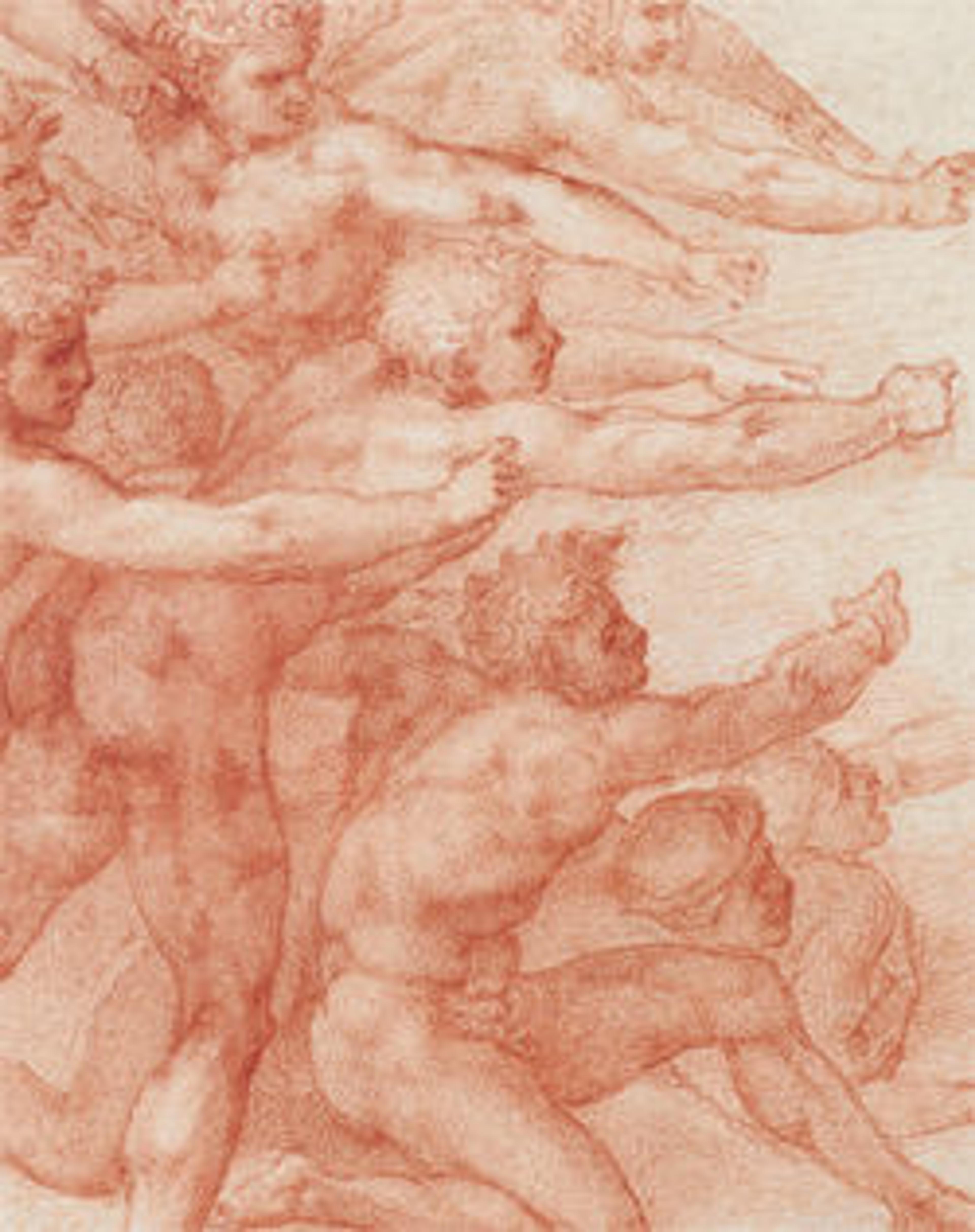Saint John the Baptist Bearing Witness
This painting formed part of a series of possibly five panels illustrating the life of Saint John the Baptist, likely designed to decorate a room in a Florentine palace. Landscape and architecture throughout the cycle’s compositions frame and divide the individual scenes. Here, craggy rockfaces form a stagelike backdrop for John preaching in the wilderness. This “wilderness” includes a nearby farm and city beyond. The five panels are by more than one artist, a common practice in Florence at the time, employed for workshop efficiency. Some scholars have even proposed the contributions of the young Michelangelo, who was Granacci’s friend.
Artwork Details
- Title: Saint John the Baptist Bearing Witness
- Artist: Workshop of Francesco Granacci (Italian, Villamagna 1469–1543 Florence)
- Date: ca. 1506–7
- Medium: Oil and gold on wood
- Dimensions: 29 3/4 x 82 1/2 in. (75.6 x 209.6 cm)
- Classification: Paintings
- Credit Line: Purchase, Gwynne Andrews, Harris Brisbane Dick, Dodge, Fletcher, and Rogers Funds, funds from various donors, Ella Morris de Peyster Gift, Mrs. Donald Oenslager Gift, and Gifts in memory of Robert Lehman, 1970
- Object Number: 1970.134.2
- Curatorial Department: European Paintings
More Artwork
Research Resources
The Met provides unparalleled resources for research and welcomes an international community of students and scholars. The Met's Open Access API is where creators and researchers can connect to the The Met collection. Open Access data and public domain images are available for unrestricted commercial and noncommercial use without permission or fee.
To request images under copyright and other restrictions, please use this Image Request form.
Feedback
We continue to research and examine historical and cultural context for objects in The Met collection. If you have comments or questions about this object record, please contact us using the form below. The Museum looks forward to receiving your comments.
